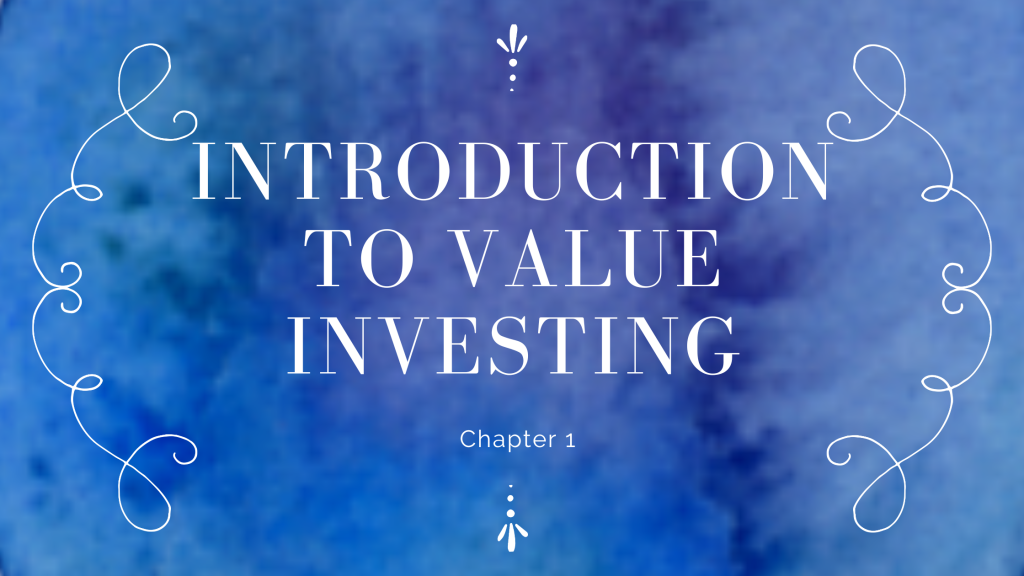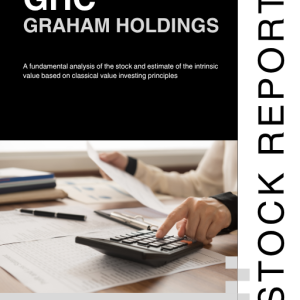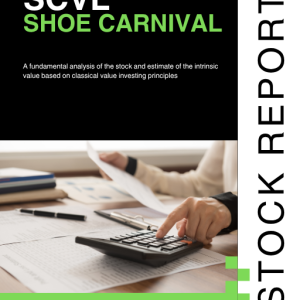
The following is a sample chapter from my upcoming book “The Art of Finding Undervalued Stocks: A Comprehensive Guide to Value Investing”, which will be available for purchase on the site when complete.
Want to be sent future chapters, and notification of when the book is available for purchase? Make sure you subscribe with your email address. Enjoy!
Value investing is a disciplined investment approach focused on identifying stocks that are trading below their intrinsic value. This approach is grounded in the belief that markets are not always efficient, creating opportunities to purchase undervalued assets that have strong potential for long-term growth.
You may have heard people saying that some information is priced-in in the stock. This is an assumption that the stock market reacts to any relevant news or information very rapidly. In fact, Fama and French proposed the Efficient Market Hypothesis, EMH, that contends that all relevant public information is instantly reflected in the stock price, and therefore, it is futile to believe that you have any edge over the market.
And yet, an increasing number of investors over the years have consistently outperformed the stock market by buying stocks they believed to be undervalued and waiting until the market corrects its view of the appropriate valuation of the stock.
Efficient Market Hypothesis is an aggregate observation, generally true for the most liquid stocks, but is not always true for specific stocks. There are gaps in the market efficiency that create gaps in valuation, and a value investor finds these gaps and exploits it for gain.
As you read through this book, we will lay out several different principles that will help you find undervalued securities and exploit these valuation gaps for your own profit.
Historical Context
The origins of value investing can be traced back to Benjamin Graham, widely regarded as the “father of value investing.” Graham’s principles, laid out in his seminal works Security Analysis and The Intelligent Investor, continue to guide investors today. Following Graham’s legacy, Warren Buffett demonstrated the immense potential of this strategy by building one of the most successful investment track records in history.
The basic concept of value investing is stayed consistent over time, however the approach has changed as the stock market has evolved. Graham’s style of value investing was very different than Buffett’s style today. Graham mainly focused on evaluating a business’ balance sheet – if there was tangible value in the assets that exceeded the market value by sufficient margin, the stock was undervalued and should be bought. Buffett expanded the field by embracing the concept of a “moat”, or competitive advantage, which allowed him to purchase stocks that are no undervalued by traditional measures, but possess extraordinarily strong earnings power that will allow the business to protect and grow its market share over time.
Where Graham worked solely based off the financial statements (he did not find it necessary to interview corporate officers or management), Buffett has married value investing principles with quality investing and places great importance on management skills and trustworthiness of the stewards of the business.
The modern value investor may work on any part of the spectrum – from very conservative asset valuation models to more enterprising models that take future earnings and earnings growth into account. There are special niches in value investing that are very lucrative but they require other specialized skills, such as investing in distressed debt. Restructurings and bankruptcies. Marty Whitman of Third Avenue Funds specializes in the field of distressed investing.
Table 1: Value Investing vs. Growth Investing
| Feature | Value investing | Growth Investing |
| Definition | Focuses on buying undervalued stocks trading below intrinsic value. | Focuses on buying stocks with high growth potential, even at higher valuations. |
| Primary Goal | To capitalize on market mispricing and gain long-term appreciation. | To achieve substantial capital gains through rapid earnings or revenue growth. |
| Stock Characteristics | Low P/E, P/B, and high dividend yield. | High P/E, P/B, and reinvested earnings (low or no dividends). |
| Investor Outlook | Cautious, focused on downside protection with a margin of safety. | Optimistic, willing to pay a premium for future growth potential. |
| Risk Tolerance | Lower risk tolerance, emphasizing stability and predictability. | Higher risk tolerance, accepting volatility for potential high rewards. |
| Examples of Metrics | P/E ratio, P/B ratio, dividend yield, free cash flow yield. | Revenue growth rate, earnings growth rate, market share expansion. |
| Market Conditions | Performs well in bear markets and economic downturns. | Performs well in bull markets and economic expansions. |
| Investment Horizon | Long-term, often spanning several years. | Long-term but may include shorter periods for faster-growing companies. |
| Famous Proponents | Benjamin Graham, Warren Buffett, Charlie Munger, John Templeton. | Peter Lynch, Cathie Wood, early-stage tech investors. |
| Examples of Sectors | Utilities, financials, consumer staples, industrials. | Technology, biotech, emerging industries (e.g., renewable energy). |
| Stock Examples | Berkshire Hathaway, Procter & Gamble, Johnson & Johnson. | Amazon, Tesla, Nvidia. |
Why Value Investing Works
Value investing leverages human behavioral tendencies such as overreaction, fear, and greed, which often lead to mispriced assets. By focusing on intrinsic value rather than market sentiment, investors can make informed decisions that yield consistent long-term returns.
You may have seen time and again a company announce great earnings and the stock takes off. When other investors see the stock gaining, they jump in, hoping to ride the momentum and make a handsome profit in the process. This accelerates the price increase, and more investors join. In these periods of frenzy, it is very common to see stock prices that are significantly higher than peer valuations or historical comparisons.
Of course, reverse is true too. There are always some stocks in the market that have sold off due to a temporary issue that is perceived to be larger than it is. The market sentiment becomes gloomier as investors see their investments shrink, and many sell their holdings to protect what remains. An astute value investor lies in wait for opportunities like this to swoop in on the undervalued stocks. Eventually the market will look at the stock more rationally and the discount in the price will go away, netting our intrepid investor a handsome profit.
There are other reasons why stocks can be mispriced, such as under-following, corporate action such as mergers, acquisitions or spin-offs, addition or deletion from an index, a large holder or fund buying or selling the stock, activist investor interest, etc. We will cover many of these in the later sections.
What You Need to Succeed as a Value Investor
Before we move on to the next section, this is a good time to review the qualities you will need to be a good value investor.
- Discipline: There is a lot happening in the stock market on any given day. The news media, your Bloomberg terminal and your smartphone notifications are always buzzing with the latest financial reports and earnings surprises and other trending topics. As a value investor, you will need to learn to block out everything else, and focus solely on what matters – finding undervalued opportunities in the market.
- Arrogance: You need to be able to stand up and say why your opinion is right and the market is wrong. And then keep steadfast in your opinion as the market continues to go against you. This is not easy to do.
- Humility: You will make mistakes, and often. Every mistake is a learning opportunity. With experience you will learn when to let go of arrogance and accept that you were wrong.
- Patience: We have no way of knowing how long the market will stay irrational. I have had stocks that generated the returns I expected in less than a month after purchase, and other stocks that I carried on the books for 2 years before I decided to divest. We cannot dictate the market, we can only learn to play in it.
Key Takeaway: Value investing is not about chasing market trends but about identifying quality assets at a discount and holding them for the long term until the market realizes their error and corrects the price.
Featured products

Shailesh Kumar, MBA is the founder of Astute Investor’s Calculus, where he shares high-conviction small-cap value ideas, stock reports, and investing strategies.
His work has been featured in the New York Times and profiled on Wikipedia. He previously ran Value Stock Guide, one of the earliest value investing platforms online.
Subscribe to the Inner Circle to access premium stock reports and strategy insights.
Featured in:




